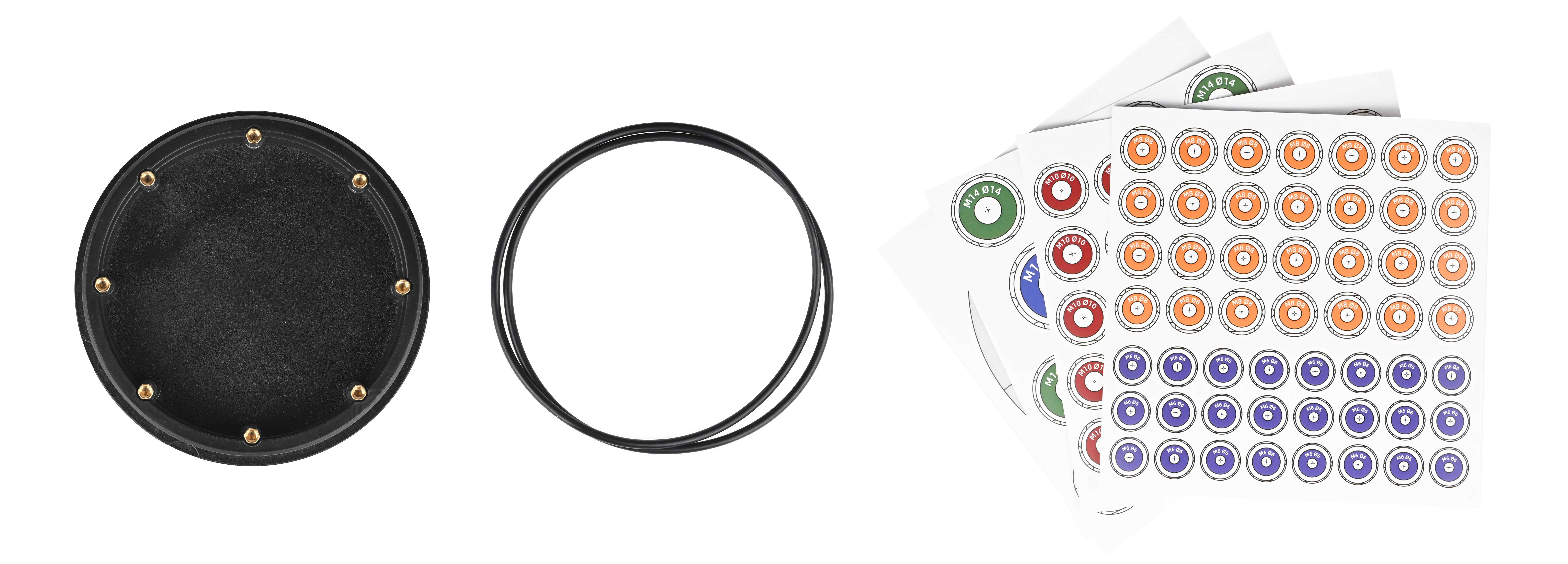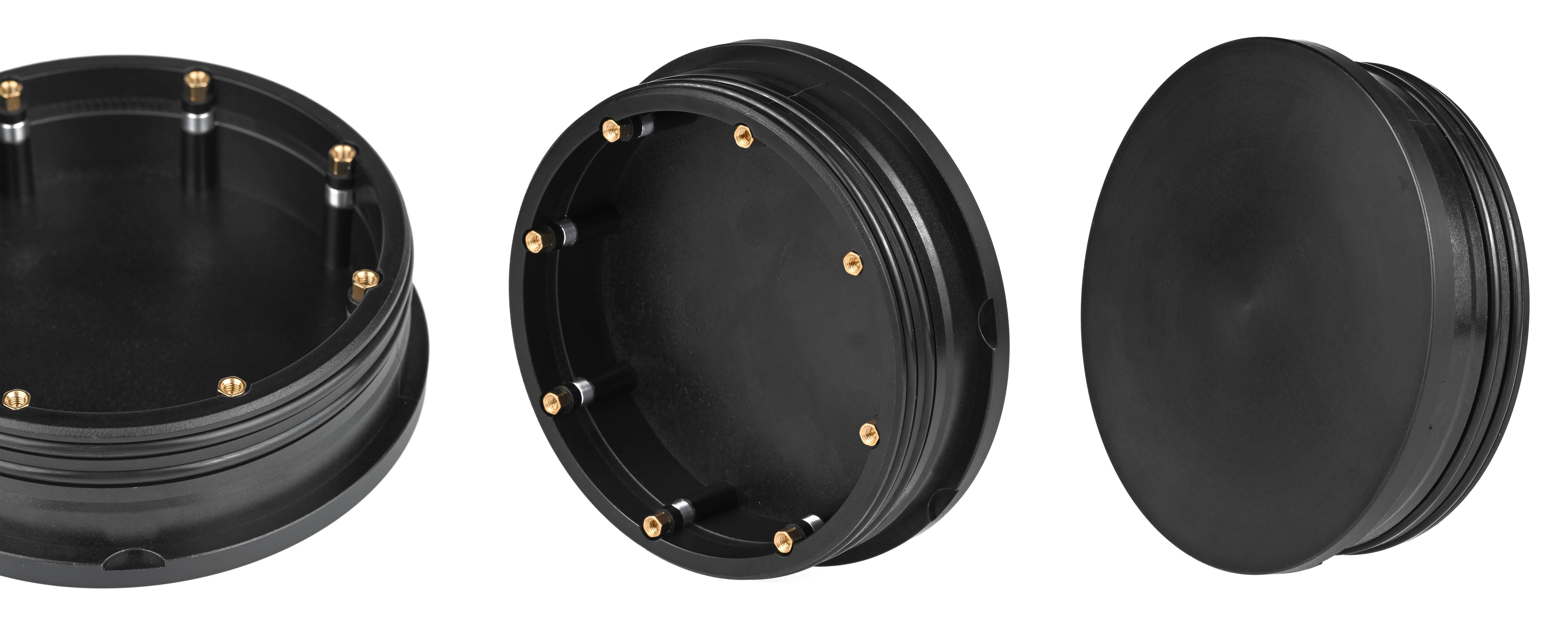Description
The plastic flanges used for the SUBLAB series watertight enclosure are produced through injection molding using molds. One end is sealed and does not require an additional installation of a end cap.
To facilitate self-layout, utilize the accompanying an set of opening stickers to mark and drill holes for the cable penetrators or other devices. With a water pressure resistance of 30 meters, these are suitable for shallow water applications, providing a low-cost underwater watertight enclosure solution.
Please note that if neither end of the watertight enclosure's plastic flanges has any holes, air inside may make it difficult for the flanges to fit snugly. To address this, it is recommended to open at least one hole for an enclosure vent or another device to ensure proper ventilation.

Shipping List
- 1 x Plastic Flange
- 1 x Opening Stickers
- 2 x Radial O-ring

Specifications
| Item | SKU | Material | Pressure Resistant Depth* | Weight |
|---|---|---|---|---|
| 115 Plastic Flange | 14011105-0001 | Nylon+Glass Fiber | 30 meters | 161g |
* Pressure-resistant depth is the test data when the hole is not opened and not evacuated, which retains a certain safety factor, and the single time at the maximum depth should be less than 300 hours. It is recommended to use Aluminum Flange and Enclosure Aluminum Tube when in maximum depth for a long time.

| Item | Outer Diameter A | Height B | Piston Diameter C | Piston Length D | Inner Mounting Hole Circle E | Inner Mounting Hole F | Maximum Inner Wall Diameter G | End Face Thickness H |
|---|---|---|---|---|---|---|---|---|
| 115 Plastic Flange | 115 | 33.5 | 105.6 | 26.5 | 93 | M3 | 94 | 8 |

Guides
FAQ
● Can I use thread adhesive on plastic flanges?
Note that most plastics cannot be used with thread adhesive and will be damaged by corrosion and cracking.
● Can it still be used if the contact surface of O-ring is accidentally scratched?
No, it cannot be used, as there is a risk of leakage.
● Are they compatible with SUBLAB aluminum tubes and acrylic tubes?
They are compatible with tubes of the same size and can be directly replaced.
● Whether to apply grease to O-rings every time?
Yes, applying lubricating grease has several benefits: it helps remove dust and impurities from O-rings during application, allows O-rings to adhere to the groove for easy assembly, and ensures smooth insertion into tubes. Not applying lubricating grease can make insertion difficult and may cause undesirable deformation of O-rings.
● What is the purpose of the notch on the step?
The notch on the step is designed for leveraging tools to create gaps, facilitating the disassembly of the flange.
● Can I apply for a replacement if the drilling is not done properly and results in scratches?
No, it is not possible to request a replacement if the drilling is not done properly and results in scratches. Please consider purchasing a new one.
● What type of drill bit should be used?
Use a standard drill bit with a drilling machine; proceed with a slow feed to prevent chipping on the back side. Exercise caution if the hole size exceeds 10, and prioritize safety. If using a handheld drill, ensure the drilling is done vertically.
● Why can't it be inserted into the acrylic tube without the O-rings?
It can be inserted without the O-rings, but it's essential to note that without the O-rings, insertion may be uneven, causing scratches on the inner wall of the acrylic tube and affecting the seal.
